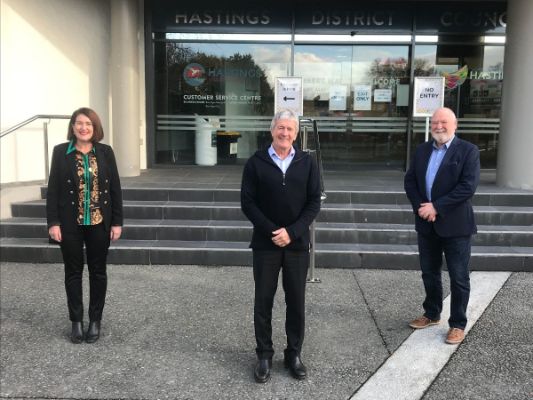Regional Council Pledges $200k To Mayoral Drought Fund
Hawke’s Bay Regional councillors have voted unanimously to contribute $200,000 to the Mayoral Drought Relief Fund to help fund the transport of feed to distressed farmers.

The mayoral fund sits at $800,000 following contributions from central Government ($500,000), Central Hawke’s Bay District Council ($50,000) and Centralines ($50,000) in the past week. Tomorrow Hastings District Council meet to consider a $200,000 pledge, to bring the fund to $1 million.
Chair Rex Graham says the fact the fund has raised $800,000 in a week reflects the strong community support for our farming sector.
“Our farmers have been hit with Covid-19, TB, the implications of new environmental regulations that are the toughest in New Zealand, and now a very serious drought. It’s been a perfect storm for many of them.”
The farming community has been the mainstay of the economy for years and it is time for the wider community to help as many of them as possible to get through this difficult period and towards a more favourable farming cycle, he said.
“I see this as an investment in our economy. We are going to need these farmers more than ever as the economic downturn really bites in to 2021.”
The aim is to create a $2 million relief fund using the central and local Government funding, and other funding options.
There is a significant, and critical lack of feed, compounded by the fact that much of the North Island has been impacted by drought. Feed is available in some South Island locations, but the transport costs are considerable.
The funding will be used to transport feed to the region, likely to be bulk feed from Timaru and Lyttelton directly to the Napier Port for road transport to the farm, or rail if more effective.
The Rural Advisory Group (RAG) are leading the drought response, with strong support from Hawke’s Bay Regional Council, Central Hawke’s Bay District Council, Hastings District Council and Civil Defence Emergency Management.
The RAG will administer the fund, and make the decisions around how best to support the rural community.


 Gordon Campbell: On The Government’s Epic Fails In Jobs And Housing
Gordon Campbell: On The Government’s Epic Fails In Jobs And Housing Council for International Development: New Zealand Must Show Leadership As The US Retreats From Global Aid
Council for International Development: New Zealand Must Show Leadership As The US Retreats From Global Aid Amy Williams, RNZ: FBI Enlists NZ Police To Investigate Sexual Abuse In Secretive Sect
Amy Williams, RNZ: FBI Enlists NZ Police To Investigate Sexual Abuse In Secretive Sect Justice Committee: List Of Submitters To Be Invited To Make Oral Submissions— Principles Of The Treaty Of Waitangi Bill
Justice Committee: List Of Submitters To Be Invited To Make Oral Submissions— Principles Of The Treaty Of Waitangi Bill NZ Labour Party: Health Leadership In Disarray While Kiwis Miss Out
NZ Labour Party: Health Leadership In Disarray While Kiwis Miss Out Waipureku Waitangi Trust: Time For The Nation To Grow Up, Says Historian O'Malley
Waipureku Waitangi Trust: Time For The Nation To Grow Up, Says Historian O'Malley Manaaki Rangatahi: Manaaki Rangatahi Calls On The National-Led Government To Prioritise The Well-Being Of Young People This Waitangi Day
Manaaki Rangatahi: Manaaki Rangatahi Calls On The National-Led Government To Prioritise The Well-Being Of Young People This Waitangi Day 


